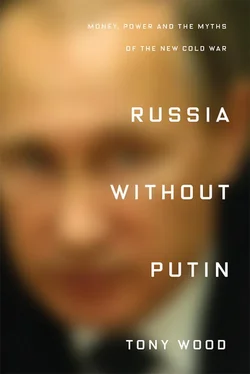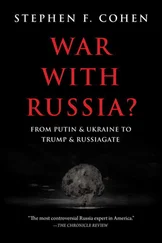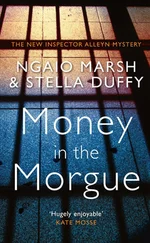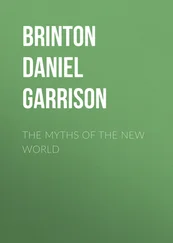Regional imbalances were not reversed by the 2000s oil boom, either: if anything, the boom exacerbated them, since oil revenues flowed either to Moscow or stayed within the production zones. Parts of the country were being propelled into hypermodernity, while large swathes of it remained mired in deep deprivation. There were huge variations within regions as well as between them. In fact, the places that posted the healthiest-looking average wages tended to be those with the most unequal distribution. {46} 46 Tullio Buccellato and Tomasz Mickiewicz, ‘Oil and Gas: A Blessing for the Few: Hydrocarbons and Inequality within Regions in Russia’, Europe-Asia Studies , vol. 61, no. 3, 2009, pp. 385–407.
Nowhere was this demonstrated more starkly than in Moscow, where an expanding fleet of Mercedes and BMWs whisked the super-rich past struggling pensioners.
The 2000s also brought a new ethnic segmentation of the workforce. Informal labour migration had been a feature of the late Soviet period, drawing workers – mainly men, predominantly from Central Asia or the North Caucasus – to factories, farms and construction sites across the country. This traffic slowed after the breakup of the USSR, when the customary routes were barred by new national borders, but during the economic revival in the new century, it resumed on something like the late Soviet pattern – except that the workers were now ‘foreign’ and also often ‘illegal’, making them much more vulnerable to exploitation. Official data counted 1.7 million labour migrants in 2007, but this didn’t include undocumented workers, who made up the lion’s share of the migrant workforce; according to one estimate, labour migrants all told numbered 7 to 8 million, almost 10 per cent of the working population. {47} 47 Grigory Ioffe and Zhanna Zayonchkovskaya, ‘Immigration to Russia: Inevitability and Prospective Inflows’, Eurasian Geography and Economics , vol. 51, no. 1, 2010, p. 108.
The new arrivals provided a large pool of unskilled labour, toiling on construction sites, cleaning the streets, working in markets or driving taxis for abysmal wages. Xenophobia against them became widespread, from the poisonous ranting of the Movement Against Illegal Immigration (DPNI) to the casual racism of TV shows like Nasha Rasha , which poked fun at Tajik labourers through two characters called Ravshan and Jamshud. Known as Gastarbeitery – Russians adopted the German word – migrant workers formed a new layer at the base of the social pyramid. {48} 48 For poll data on attitudes to migrants in Moscow during the 2000s, see Tatiana Yudina, ‘Labour Migration into Russia: the Response of State and Society’, Current Sociology , vol. 53, no. 4, 2005.
One of the most significant social developments of the 2000s was the expanded role and presence of the state. The state payroll grew from 1.1 million in 2000 to 1.7 million in 2010 – a 50 per cent increase over the course of the decade. The bulk of this growth occurred at the federal level, which accounted for about half of all government employees. {49} 49 Figures from Gustafson, Wheel of Fortune , p. 391 citing Rosstat data.
Their spatial distribution was crucial: outside the major cities and resource hubs, federal and local government agencies were often the main sources of employment. These functionaries were an important source of support – and of help with electoral rigging – for the regime. But the Putin system drew an even larger portion of its base from among the millions working in state-owned enterprises or in the remnants of the Soviet welfare state. Together with those directly employed in the state apparatus, they formed a category known as biudzhetniki – literally ‘those living off the state budget’, though a less ideologically hostile translation might be ‘public-sector workers’. In some estimates, they amounted to almost a third of the workforce; including their families and dependents, they might even have made up a majority of the population. {50} 50 ‘Issledovanie RBK: skol’ko v Rossii chinovnikov i mnogo li oni zarabatyvaiut’, RBK, 15 October 2014.
The intelligentsia, too, experienced its version of ‘stabilization’ in the 2000s. Strange as it may seem today, they were initially among Putin’s most enthusiastic backers. In late 1999, when Putin was still prime minister, pollster Yuri Levada pointed out that ‘no Russian leader has had such unified support among the educated, professional and artistic classes since Boris Yeltsin in the late 1980s and early 1990s’. {51} 51 Valeria Korchagina, ‘Intelligentsia Shifts to Support Putin’, Moscow Times , 30 November 1999.
Putin’s seriousness and sobriety were at this point considered assets, contrasted with the drunken fumblings of Yeltsin. The assertive, macho persona was also a core part of his appeal, especially to those lured by the idea that a ‘strong hand’ was needed to reel in the anarchy of the 1990s. For some, Putin even promised to fulfil the neoliberal fantasy of a ‘Russian Pinochet’ – the idea being that authoritarianism would somehow guarantee economic growth. [6] Their willingness to overlook the Pinochet regime’s bloody record was the worst part of this fantasy – a latter-day version of the idea that fascism ‘made the trains run on time’. But it also relied on a total misreading of pinochetismo’s economic performance. What is commonly referred to as the ‘Chilean miracle’ actually consisted of short bursts of growth that followed deep recessions largely caused by the regime’s own policies. It took until 1989 for Chile to regain its per capita output level of 1970. In the meantime, swathes of the economy had been transferred into private hands at knockdown prices, public health care, pension and education systems had been gutted, and poverty had almost tripled. In that respect, Russia had already had its Pinochet – and his name was Yeltsin. For a substantial critical assessment of the dictatorship’s economic outcomes, see Joseph Collins and John Lear, Chile’s Free-Market Miracle: A Second Look , Oakland, CA 1995, especially pp. 243–57.
The generalized admiration of the president became self-reinforcing, giving rise to a stiflingly conformist climate in which it became outlandish as well as pointless to criticize the authorities. This shift was rendered all the more effective by the postmodern capaciousness of the broader culture: ideas and beliefs were mashed together in wildly incongruous combinations that made their substance hard to pin down, and hence difficult to argue with or oppose. Soviet nostalgia blended with folksy echoes of medieval Muscovy; Western philosophy and critical theory were digested alongside Russian nationalism and religious texts. A ‘sickening aesthetic atmosphere’ had taken hold of the country, according to the leftist poet Kirill Medvedev, who described ‘the average cultural consciousness’ as ‘a putrid swamp – half-Soviet, half-bourgeois – in which Pushkin, Dostoevsky, Josef Stalin, the pop star Alla Pugacheva, and Jesus Christ all lie side by side, dead and decomposing’. {52} 82 Kirill Medvedev, It’s No Good: Poems, Essays, Actions , trans. Keith Gessen et al, New York 2012, p. 115.
There was also, of course, a material basis to the cultural consensus behind Putin. The burst of economic growth in the 2000s created a glossy, flashbulb-lit world of consumption, evoked by the borrowed English word ‘glamur’ . There was an ever greater need for PR experts, salespeople and advertising gurus, while the arrival of the web created new positions of its own: programmers, webmasters, bloggers. Many of these posts were poorly paid and insecure, and most ‘culture workers’ of the 2000s had to take on other jobs to make ends meet. But it seemed as if the predictions made in the 1990s – that the market would slot people into steadily more specialized, ‘professional’ niches – were being partially realized. As Kirill Medvedev put it, ‘there is no intelligentsia in Russia any more. There are just fragments, moving around Moscow and the other large and smaller cities, remnants, shards’. {53} 53 Medvedev, It’s No Good , p. 132.
Читать дальше












